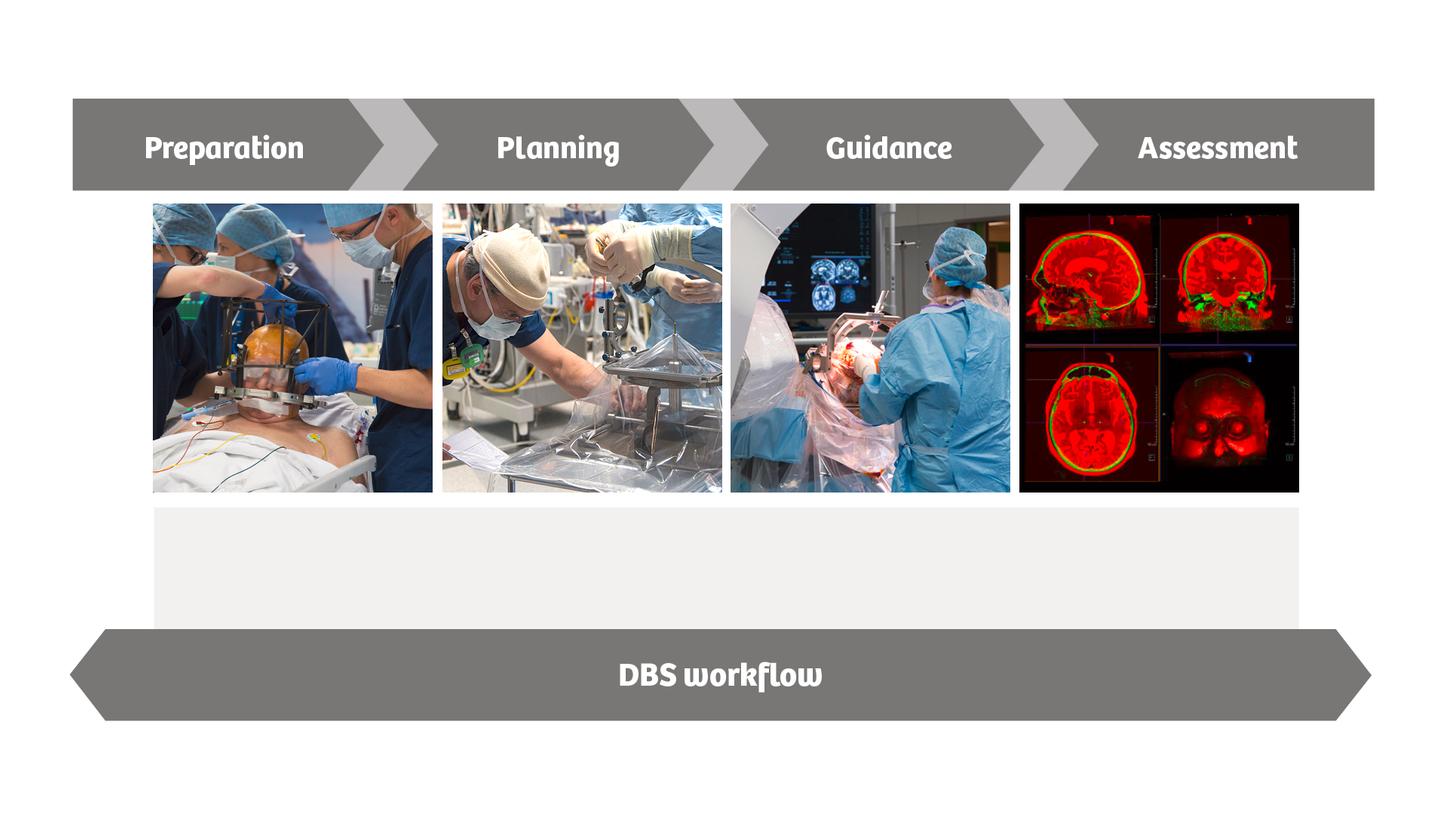Our robotic C-arm ARTIS pheno supports precise electrode placement, allowing you to save valuable OR time, reduce the duration of anesthesia, and minimize patient transfer.
Enabling more efficient image-guided DBS procedures
Performing DBS procedures using conventional approaches involves both clinical and logistical hurdles. Neurosurgeons typically rely on preoperative MR scans to bring the electrodes into the correct position, sometimes even without access to live image guidance. Furthermore, CT scans are often necessary for determining the exact coordinate location as well as confirming correct electrode placement. This requires that the usually anesthetized patient be transported to the radiology department, which is cumbersome and risky due to the need for patient repositioning and continued anesthesia. Our Hybrid OR solutions may eliminate these hurdles by bringing high-quality 2D and 3D intraoperative imaging and image guidance to your DBS workflow.





